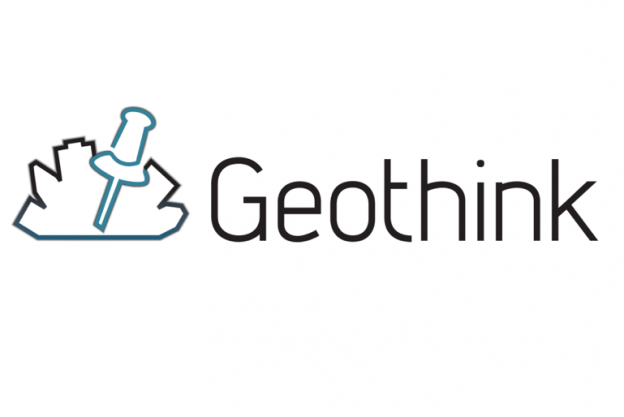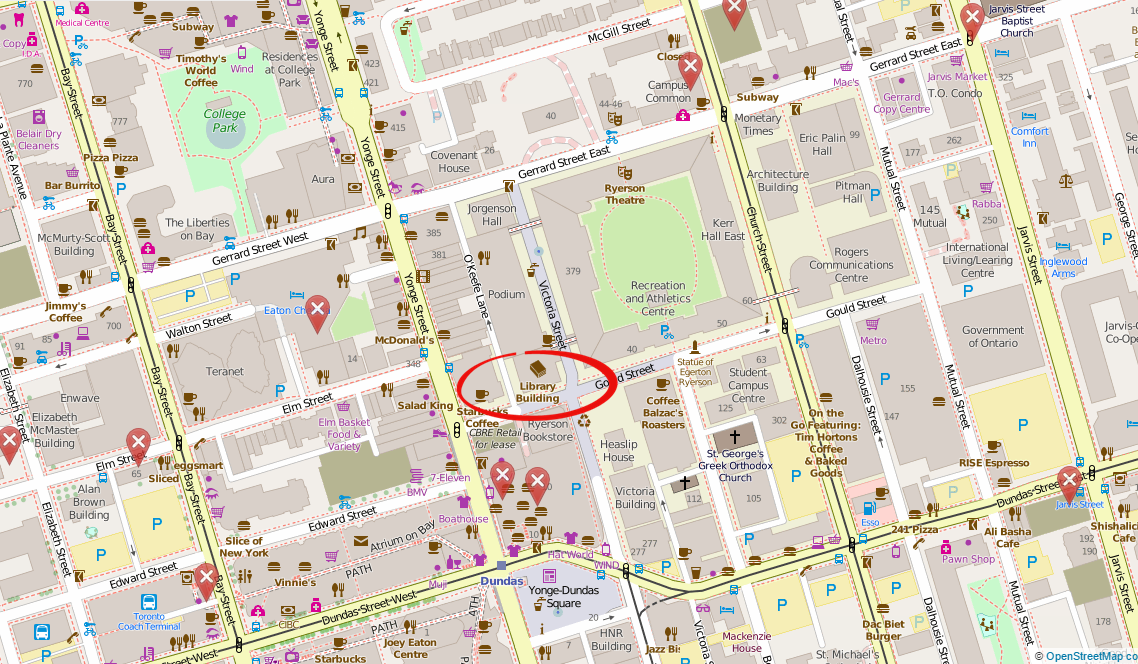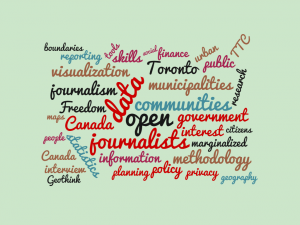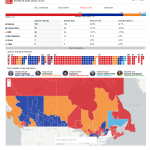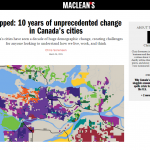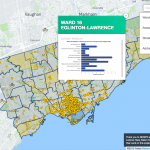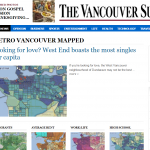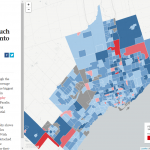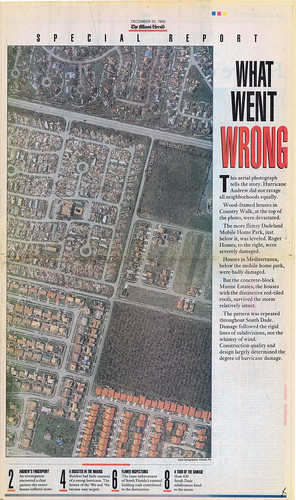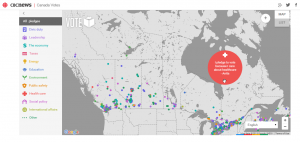
Neptis researcher and transportation engineer, Erin Toop, explains statistics during a Senior Reporting data journalism workshop at Ryerson University on Oct. 9.
By Prajakta Dhopade
I stared blankly at the rows upon rows of transportation statistics on my computer screen. My heart thudded in my chest, my eyes darted to my classmates’ faces. Did they get it? The numbers in the intimidating Excel spreadsheet I was scrolling through didn’t make much sense to me. I thought I’d left math class behind when I came to journalism school.
As the initial panic subsided and I actually took a moment to think about the variables in the data set before me, I began to see how they correlated, how the numbers might raise important questions that could lead to stories I can tell as a journalist.
Which of the 16 zones Toronto is divided into has the most cyclists and what does that say about cycling infrastructure in parts of the city? Has there been an increase in people cycling to work? The possibilities seemed endless.
My foray into data journalism occurred in Ryerson journalism instructor Gavin Adamson’s senior reporting class last month when researchers from the Neptis Foundation, a charitable, non-partisan research organization, came to share the results of an unreleased Transportation Tomorrow Survey (TTS) with students.
It was an opportunity for us to produce story ideas from a vast collection of data about the modes of transportation used in the Greater Golden Horseshoe.
The Neptis-led data journalism workshop was organized after April Lindgren, director of the Ryerson Journalism Research Centre (RJRC), and Marcy Burchfield, executive director of the Neptis Foundation, met at the annual meeting of the Canadian Geospatial and Open Data Research Partnership this summer.
“We have partnered with other universities on previous projects and have always had a relationship with up-and-coming planners, [and] transportation engineers, so this seemed like a good fit—to introduce some young, up-and-coming journalists to an important data set that tells a lot about travel behaviour in the region,” said Burchfield.
The TTS is sponsored by the Ministry of Transportation Ontario and is a collaborative effort by regional governments and transportation associations to collect data revolving around how people travel in southern Ontario.
The survey sample is large, involving five per cent of the population in the Greater Toronto and Hamilton Area (GTHA).
Neptis shared summary data for 32 variables with us, meaning there were 1,500 possible comparisons to make during our analysis.
According to Burchfield, while the TTS has been used widely for several years for analysis surrounding land-use and urban development, for a long time it has been behind an archaic graphic user interface that limited its accessibility.
She says Neptis hopes to “break down a barrier of access” so that you don’t have to be an expert to draw conclusions from the TTS.
Erin Toop, transportation engineer and a Neptis researcher, was one of the presenters who condensed the complicated raw information into accessible spreadsheets for us to sift through.
The Neptis team members began their Oct. 9 presentation to my class with an explanation of why combiningstatistics with journalism is so important in seeing the big picture.
“With data journalism, you can actually assemble all the information that is out there and you’re able to see trends, you’re able to see how things come together… [and] share these stories in a meaningful way,” said Phinjo Gombu, a former Toronto Star urban affairs reporter who is now working with Neptis.
The presenters emphasized that the ability to decipher raw data and draw conclusions from the numbers is vital in determining the truth and holding politicians accountable.
As a journalism student, this exercise made me realize that having data journalism skills is a valuable asset to have in an industry that is starting to value digital literacy over much else—but our curriculum is only just shifting to accommodate what the job market demands.
Lindgren said the purpose of the partnership between Neptis and Ryerson’s journalism school was to explore different ways of teaching data journalism.
“It’s quite a challenging thing to do because of the technical requirements…You need to know how to work with spreadsheets and data, so there are several levels of complexity in terms of learning,” said Lindgren. “And also the data are so interesting and the story potential is so great that it was a real hands-on opportunity to do real stories with real data.”
While the Excel spreadsheets prepared by Neptis were much less intimidating than the original data format, we were still faced with the daunting task of tackling numbers and making sense of the 32 variables we were given to work with. Transportation modes, trip purposes, trip rates—how were we supposed to see the trends and their significance?
Adamson says that hands-on work with data helps break down numeracy fears, a critical hurdle for journalists, who often must sift through data evidence to analyze governmental and corporate decision-making.
After Toop gave us an overview of how the survey worked and what each variable represented, the class divided into groups to generate story ideas.
What really worked about the workshop is that we had the Neptis researchers to help us understand the feasibility of comparing variables while our journalism instructors encouraged us to think about how the data related to what’s happening in the city.
We learned to simplify our approach to finding patterns in the data and to think about what our lede would look like.
Fourth-year journalism student Marija Petrovic went on to use the TTS data to write a story for Adamson’s reporting class.
She discovered that cycling within Toronto has increased more than 50 per cent in the past four years as more people choose to ride their bikes to avoid congestion on city roads.
“I liked seeing data that was something that I see happening every day and that is such a big part of a Ryerson student’s life,” said Petrovic, who confessed she found the workshop challenging at times because math is not her forte.
We didn’t come close to taking the data and creating ambitious graphic visualizations like the images shown to us by the Neptis researchers — indeed, following through with the analysis would be another obstacle to tackle— but the exercise got us thinking.
“Although it was a good three-hour workshop, it wasn’t enough,” said Michael Chen, a fourth-year journalism student who attended the presentation.
He thinks it was a great opportunity to look at the data and ask questions but would like to have spent more time learning about Excel sheets and analyzing statistics.
I definitely agree that we needed more time to become comfortable with the numbers; even as I started to figure them out, I still found them overwhelming.
Finding patterns wasn’t easy either, but it was helpful receiving the Neptis researchers’ feedback because it was reassuring to realize we weren’t grasping at straws– that maybe we were onto something.
Adamson hopes to partner with Neptis again for other classes in the journalism program, including the masthead publication, The Ryersonian.
Prajakta Dhopade is a fourth-year journalism student at Ryerson. She is an aspiring online journalist with an interest in women’s issues. Her work has also been published by the Canadian Press.
Cross post from the Ryerson Journalism Research Centre
